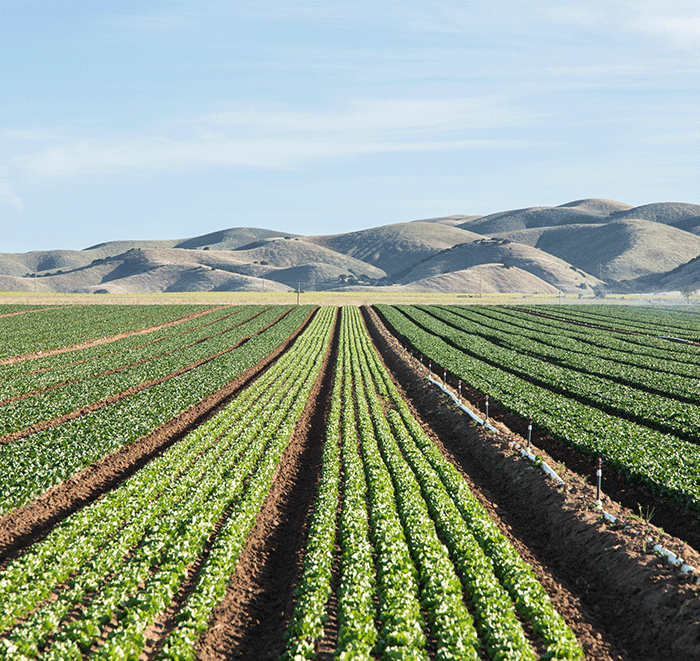The Organic System Plan (OSP) is the foundation of the organic certification process. The OSP is an agreement central to certification that “must be negotiated, enacted, and amended through an informed dialogue between certifier and producer or handler and it must be responsive to the unique characteristics of each operation.” Every operation must have an OSP that outlines the activities necessary for achieving and maintaining compliance with regulations.
5 Areas on an OSP
- A description of practices and procedures to be performed. This includes the frequency of what is performed and where. We have included examples where Wilbur-Ellis has a direct impact and can be of help to the grower. There are other examples of what is included in the attached documents below.
- Practices to maintain or improve natural resources, including biodiversity;
- Seed for cover crops and beneficial habitat
- Procedures for notifying neighbors and road departments to prevent contamination of organic crops by prohibited substances;
- Help with notifications, i.e., county road and railroad herbicide work
- Be aware as we are making applications on conventional crops near organic crops, make all efforts to minimize drift and note wind speed and direction (0-360°) at time of application
- Pest management practices
- Recommend products from the growers approved list and give guidance for using them
- Recommend pest control inputs when justified and document those recommendations plus method of application
- Building up the threshold of predator species with habitat
- Increasing soil health, plant nutrition, O.M. and improved irrigation practices
- Practices to maintain or improve natural resources, including biodiversity;
- Documentation of each substance to be used as a production input. There are two elements to this: what the grower may apply to the field and what the grower actually applied to the field.
- Each grower must have a list of products that will be used on the field approved for organic production, even if they are not sure they will apply it. These approved products include soil amendments, including compost and manure, crop production aids, pest control inputs, and seed. The documentation required for products is the label, an SDS, certificate from an organic product listing agency, Certificate of Analysis (COA) and other documentation that may be requested by the certifier.
- The grower will also need to have a record demonstrating the need for the product. For example, the application of any micronutrient requires a soil or tissue test demonstrating the need for the same before it can be applied. The grower will also need a record of when, where and how much was applied to be included in their records. Using AgVerdict for a recommendation and application event is a good way to accomplish this.
- Growers must show they have attempted to use alternative practices prior to using approved products. These approved products include: soil amendments, including compost and manure, crop production aids, pest control inputs, and seed;
- A description of monitoring practices and procedures. Since much of the philosophy behind organic production is prevention, growers must have a monitoring system in place. This includes soil and tissue sampling, sampling water quality and monitoring soil moisture and pest scouting. With the monitoring in place, the grower must include what will be done when specific thresholds or criteria are met. For example, irrigate when soil moistures drops to a certain value, apply micronutrients if soil test drops to a specific value, or make an insecticide application based on sweeps or trap counts.
- Wilbur-Ellis is often responsible for sampling and scouting. We need to be conscientious about the records we keep and make them available to the grower. AgVerdict is a valuable tool for scouting, sampling, and the resultant records.
- Description of record keeping. The grower must have a record keeping system in place and describe its functions and how it will be used. Traceability and transparency should be components of the record-keeping system used, so the grower and the certifier can easily see evidence of compliance to the OSP. A field map is also required. Field boundaries, buffers, and adjoining fields must be evident and labeled. AgVerdict should be a consideration for your customers. It can be a big component of their overall record-keeping strategy.
- Description of management practices to prevent contamination. The grower will need to document the steps they will take to prevent contamination of the field and harvested product. These practices can include buffers, rows of trees to prevent drift and notifications to neighbors and clean out procedures.
Lastly, each OSP will need to be updated annually. Any change to the above will need to be included in the update. If new regulations have come into practice, then the grower will need to document how they with will comply. This is important as new products become available each year.
Organic Resources
Introduction to Organic Practices Fact Sheet
Guide for Organic Crop Producers
Guide for Organic Certification

